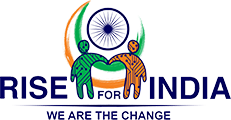
Literacy is an important tool for the development of a human being. However, the umbrella term ‘literacy’ encompasses many aspects. In today’s fast paced and dynamic world, the role of technology is playing a more significant role. Keeping oneself abreast with the latest developments in the field of technology, may, hence, be a trend for many, but for some even the basics are elusive due to various challenges.
“I use a laptop at home because I have learnt now how to use one. In fact, I told my mom that we will start paying our bills from home rather than standing in long queues.” – Afsana, 12 years, village Sohanpur, block Ramgarh, Alwar. “I like learning computers. I have learnt tailoring too. Now, I want to achieve something in life, and know that I am equipped for it.” – Muskan, 12 years old, village Thekda, block Ramgarh, Alwar. “I can find answers to questions pertaining to reapplication of Aadhar Cards, the Right to Information Act, application for pensions etc. easily on the internet. Thiswould not have been possible without being computer literate.” – Insar, class 7, village Thekda, block Ramgarh, Alwar. Since almost 70% of India’s population resides in rural areas, development in these
areas is vital. An important pillar for development is education and literacy. Explains Jetender, a digital literacy trainer at a school in Kalsera village, Alwar: “Many villagers are not aware of their entitlement as per different government schemes; if the current generation, the students of today or the decision makers of tomorrow, are made computer literate, then the chance of them passing this knowledge to their parents, family and community are high. I remember a student who had helped his family avail the entitled ration under the Public Distribution System. Imagine the boost in confidence this child must have received! Leaning computers can also improve career prospects.”
Manisha, who has been working with the Sehgal Foundation as a teacher trainer, adds: “I feel for girls it is advantageous that courses are conducted in the village, especially since parents are reluctant to send their girls out of the villages.”
The Digital Literacy initiative commenced by the Sehgal Foundation in Nuh District, Haryana and Alwar, Rajasthan, in 2016 and 2017 respectively, has been a kind of a movement. The program, targeted at adolescents, age group 15 years and above, includes three major components: basics of computer and internet literacy, life skills education and rural governance. These three pillars facilitate the participation of youth in good rural governance through a more aware, motivated and enthusiastic participation, with the objective of bringing about change at the grassroots level. In fact, a module called “Who am I?” (under the Life Skills Education section) has helped students with basics like introduction of the self in front of an audience.
The inclusion of aspects pertaining to governance enables students to be aware of government schemes and provisions like the Public Distribution System, functions of a Gram Panchayat, mid day meals, role of School Management Committees etc.
In addition, a certain level of awareness pertaining to health, nutrition and sanitation is also facilitated through the course. During a ‘survey’ conducted among’st students, it was found that being computer literate helped the children with a whole array of things: updated railways schedules, sample/model papers for their schoolwork, status of applications pertaining to ration card/pension etc., online shopping, using paytm, video calling, sending e-mails and a host of others.
Based on the social structure, separate classes for boys and girls are conducted. The teacher-student ratio stands at 1:25 (usually a classroom has 25-30 students), which enables ‘learning by doing’ – a vital aspect for understanding the nuances of the computer and internet. However, challenges are galore: Maintaining a balance between school, tuition’s and the course is tough for students. Factors such as absenteeism, irregular electricity supply, reluctance of female students to attend the course (long distances, security issues etc.) are some other obstacles. It is important to note that since the course includes three important aspects – life skills, governance and computer literacy – it helps in a more all-round development of the child. Muskina says: “I stood up to my mother because she was serving me milk
diluted with water, while my brother was being served pure milk. Why the disparity?”

In another case, Mohina, who is 12 years of age, is an active School Management Committee member. Jamsheda, a mentally challenged girl, who is an active attendee of the course, attends school level meetings and assists in maintenance of school property! An achievement in its own right! Manisha runs the course for two batches of students in the village of Dholi Dhoop, district Ramgarh. One of the batches is an all girls one, while the other is a mix of boys and girls with an average age of 14 years. Says she: “I have always enjoyed teaching. I joined this job because of this, plus I wanted to support by family financially. In addition, I have learnt a lot during the process of imparting the knowledge I myself received via the trainings held by the foundation, and the process continues, which ensures that there is a continuous development of all involved.”
The idea is to encourage the youngsters to be change initiators, as participation in the change making process is vital. Better life skills encourage personality development and a more conducive environment.
Sarah Berry
Sehgal Foundation, Communications and Media Consultant, s.berry

